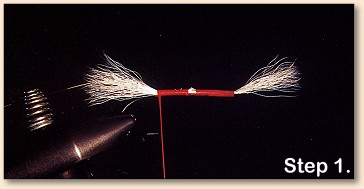
1. Using a strong thread (capable of spinning deer hair), attach
a tail and wing, both made from stacked calf tail. Attach a long
piece of wire or monofilament, binding it down along the shank.
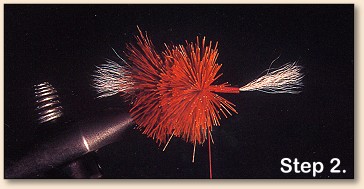
2. Begin spinning deer hair onto the hook shank. Place
each bundle directly against the previous one and push them
together so they are as compact as possible.
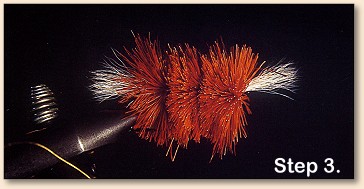
3. Continue spinning bundles of hair onto the hook until you
reach the front. Tie off and remove the thread.
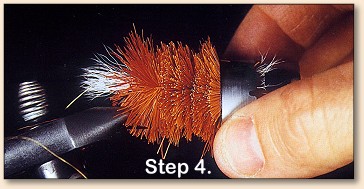
4. Take a douple-edge razor blade, and bend it into an
arc between your thumb and fingers. Run the edge of the blade
along the spun hair from front to back, evenly trimming the
hair. WARNING: Be extrememly careful when using the razor
blade as they are very sharp. Some tiers prefer to prefer
to prepare the blade ahead of time by using strips of duct
tape to seal off the rear blade.
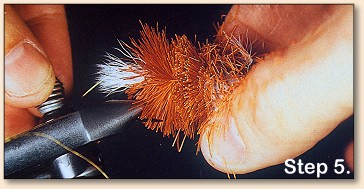
5. Being careful not to trim off the tail, rib, or wing,
trim the body to shape and use fine scissors to finish the job.
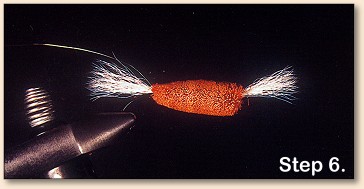
6. The trimmed fly should have a cigar shape.
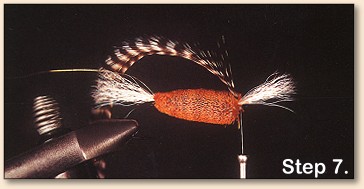
7. Reattach the tying thread and secure by its butt end a long
grizzly hackle.
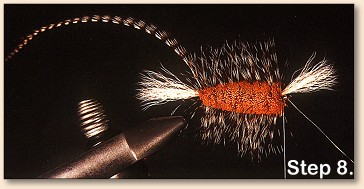
8. Reverse wrap the hackle and spiral the rib material through it
to the front. In both cases (spirling the hackle rearward and the
rib forward) wiggle the material back and forth as you spiral it
along the body to make sure it sinks into the spun hair and seats
itself close to the hook shank.
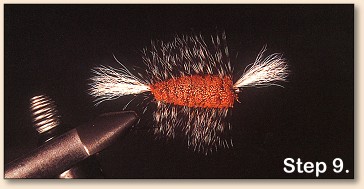
9. Tie off the rib material, clip the butt ends and whip
finish the fly.
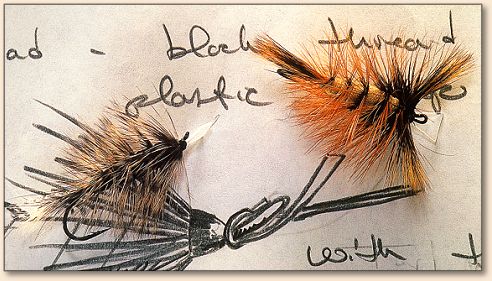
-
Blending old and new, Joe Rossano of Arlington, Washington, builds
lips of hard plactic into some of his classic-style skaters to
help them wake more effectively on the water's surface. ~ JS



